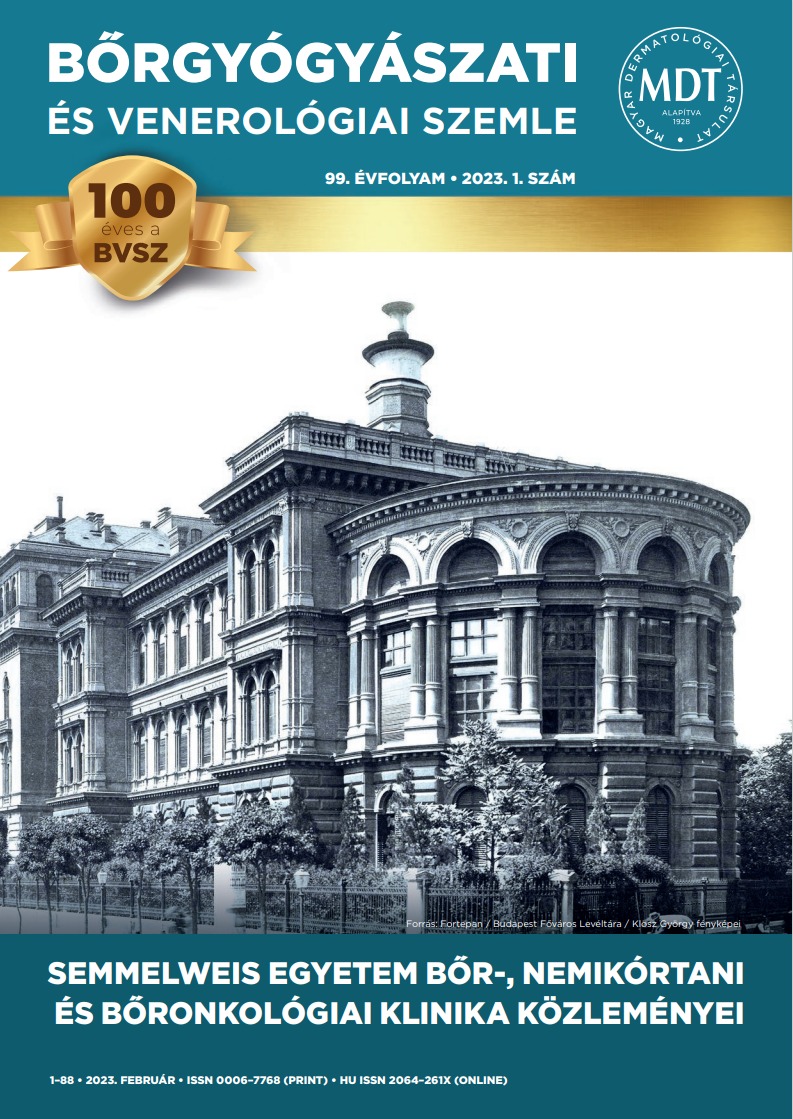A Semmelweis Egyetem Bőr-, Nemikórtani és Bőronkológiai Klinika Sézary szindróma miatt kezelt betegeivel szerzett tapasztalatok összefoglalása
Absztrakt
A primer cutan T-sejtes lymphomák (CTCL) egy súlyos klinikai megjelenési formája az erythrodermával, nyirokcsomó- és vérérintettséggel járó Sézary szindróma. Retrospektív adatbázis-alapú vizsgálatunkban a Semmelweis Egyetem Bőr-, Nemikórtani és Bőronkológiai Klinikán 2016.01.01-2022.06.30. között észlelt, diagnosztizált és kezelt 23 Sézary szindrómában szenvedő beteg, 8 nő és 15 férfi anyagát tekintettük át. A betegek medián követési ideje 42 (6-167) hónap volt.
Kórlefolyás szerint 17,4% komplett remisszióba került, 30,4% parciális remissziót ért el, 13 %-uk állapota stabil maradt, míg progressziót 39,1% esetén láttunk. A leggyakrabban alkalmazott terápiás entitások az extracorporalis photopheresis (95,6%), a bexaroten (52,2%), methotrexat (43,5%) és az acitretin (34,8%) kezelés voltak. Az Sézary szindróma diagnosztizálása, kezelése jelentős kihívást jelent. Minden erythroderma esetén javasolt szövettani mintavétel, CTCL igazolódása esetén a TNMB besorolához szükséges vizsgálatok elvégzése. A betegség korai szakaszában fontos a hozzáférés a bőrre irányuló (fénykezelés, radioterápia) és immunmoduláns szisztémás kezelésekhez (ECP, retinoidok, MTX,), ugyanakkor a
progressziót mutató betegek ellátásában elengedhetetlen az együttműködés hematológiai, őssejt-transzplantációs centrummal.




